The full name of sass is "Software as a service", which means "software as a service"; it is a software deployment model in which third-party suppliers build applications on cloud infrastructure and subscribe to them. These applications are delivered to customers over the Internet without requiring customers to build the underlying infrastructure upfront. This means that the software can be accessed on any device with an internet connection and a web browser, unlike traditional software that can only be installed on your local machine.

The operating environment of this tutorial: Windows 7 system, Dell G3 computer.
Saab is Software as a service. SaaS is called software operation in the industry, or soft camp. It is an application model that provides software services based on the Internet. With the development of Internet technology and the maturity of application software, a completely innovative software application model that began to emerge in the 21st century is the latest trend in the development of software technology.
SaaS is a software deployment model in which third-party providers build applications on cloud infrastructure and provide these applications to customers over the Internet in the form of subscriptions, without requiring customers to build the underlying infrastructure in advance. . This means that the software can be accessed on any device with an internet connection and a web browser, unlike traditional software that can only be installed on your local machine.

Saas is an emerging software application model and a software layout model. Its application is specially designed for network delivery to facilitate user hosting, deployment and access through the Internet. Traditional software, especially software in professional fields, has to go through quite tedious processes such as research, plan formulation, product development, and debugging before delivery. Saas eliminates these links. As long as you have a computer and a network, you can log in directly and use it. It is very fast and convenient!
Advantages of SaaS
Advanced applications can be used. To deliver a SaaS application to your users, you don't need to purchase, install, update, or maintain any hardware, middleware, or software. SaaS enables highly advanced enterprise applications such as ERP and CRM to be used by businesses that lack the resources to purchase, deploy, and manage the necessary infrastructure and software on their own.
Pay only for what you use. And because SaaS services will automatically scale up and down based on usage levels, you’ll also save money.
Free client software to use. Users can run most SaaS applications directly from their web browser without downloading and installing any software (some applications require plug-ins). This means you don’t need to buy and install special software for your users.
Easily enhance employee mobility. SaaS makes it easy for you to increase employee "mobility" because users can access SaaS applications and data from any computer or mobile device connected to the Internet. There is no need to think about developing the app to run on different types of computers and devices because the service provider has already done that part. Additionally, there is no need to learn specialized knowledge to handle the security issues that mobile computing poses. No matter what type of device the data is being used on, a carefully chosen service provider will ensure that the data is kept safe.
Access app data from any location. Once data is stored in the cloud, users can access their information from any computer or mobile device connected to the Internet. And by storing application data in the cloud, no data will be lost if the user's computer or mobile device fails.
3 deployment models of SaaS software
SaaS is one of the main service models of cloud computing. Customers can Deploy SaaS in three different models:
Private Cloud: Cloud software is built on infrastructure that is intended for use by a single organization composed of multiple users. The infrastructure may be owned, managed, and operated by the company or a third party, and it may exist within or outside the company.
Public cloud: Cloud software is built on infrastructure that is open to the public. Infrastructure can be owned, managed, and operated by corporate, academic, or government organizations, or some combination. It exists on a cloud provider basis.
Hybrid Cloud: Cloud software built primarily on one type of infrastructure, but with the ability to switch to another type of infrastructure when demand is high. Data and applications are portable, supported by standardized or proprietary technology.
Advantages of SaaS platform
##In general:
SaaS software provides customers with direct and scalable access to software with minimal overhead. Examples of SaaS software include cloud-based customer relationship management (CRM) solutions, collaboration platforms for chat and video conferencing, online productivity suites, expense management software, and more. All of these offer the same or similar functionality as traditional licensed versions while being easier to manage.For software developers, the SaaS model means a faster and more efficient recurring revenue model, which provides faster deployment times than locally deployed software.
The SaaS model has become the main model for enterprise consumption software, and it now represents the largest single part of the entire cloud computing market. Many organizations will adopt SaaS as the core of their cloud migration strategy to simplify access to critical applications and reduce licensing costs.
Specifically:
-
Shorter time to value:
Getting started with cloud-based software is easy of. After setting up a SaaS subscription and proper security controls, businesses can start using business applications immediately and realize its benefits. In most cases no extensive customization is required, and the client application is easy to use.
-
Improve scalability:
SaaS solutions can scale to large numbers of users without the need to set up and manage additional infrastructure. Often all that is needed is an update of the subscription. Most SaaS solutions are multi-tenant and can support a large number of concurrent users across the globe.
-
Reduced costs:
SaaS scales based on actual usage, meaning customers only pay for what they actually consume. There is no danger of over-purchasing licenses or making large capital expenditure investments that will become a huge burden in the long run.
-
Easier remote working and flexibility:
Since SaaS applications are delivered over the internet, they can be accessed relatively easily from any mobile or desktop device . This flexibility makes them ideal for remote working and hybrid work models, as they provide consistent, anytime, anywhere access.
-
Continuous Improvement:
SaaS service providers are constantly improving their products with new features and patches. To take advantage of these enhancements, simply update the SaaS application and restart the software. No specialized implementation services or upgrade packages are required.
Other advantages include:
Data Storage: Data is typically stored in the cloud
Analytics: Get data reports, provide intelligent tools
Improving security: SaaS providers invest heavily in security technology and expertise
SaaS solutions are beneficial in a variety of business scenarios:
When startups and small businesses don’t have the time, money, or expertise to build their own applications Programs or hosted applications, they will find SaaS convenient. Larger companies may use SaaS technology for short-term projects or applications that are not needed year-round. Any company can benefit from SaaS technology when dealing with applications that require web and mobile access.
SaaS implementation can be fairly straightforward and accessible via the public cloud for simple application self-configuration. However, SaaS solutions designed for private clouds require actual configuration and training from the vendor.
What role does SaaS play in cloud migration
Cloud migration strategy refers to migrating applications, infrastructure or data from an on-premises site to on the cloud, or plans to replace or modify them with cloud technology. SaaS provides a simpler cloud migration path.
More specifically, SaaS solutions may completely replace traditional on-premises applications. For example, on-premises CRM platforms may be phased out and replaced by SaaS platforms hosted and maintained by cloud service providers.
In addition to SaaS-driven cloud migration, organizations may also use other cloud solutions in the IaaS and PaaS space to rehost and restructure their business.
What is the difference between SaaS, IaaS and PaaS
Software as a Service (SaaS) makes applications available over the Internet. Customers do not need to install or run programs on their devices to use SaaS solutions.
Platform as a Service (PaaS) provides a framework for creating and deploying applications while eliminating the need for infrastructure management. Infrastructure as a Service (IaaS) provides companies with pay-as-you-go infrastructure with the benefits of flexibility and control.
The differences between the three cloud computing services really come down to the control layer. IaaS provides customers with maximum control as they are responsible for their own applications, data, runtimes, middleware and operating systems. On the other hand, PaaS customers only manage their applications and data, while SaaS customers are only responsible for their own data within the software.
For more related knowledge, please visit the FAQ column!
The above is the detailed content of What does sass software mean?. For more information, please follow other related articles on the PHP Chinese website!
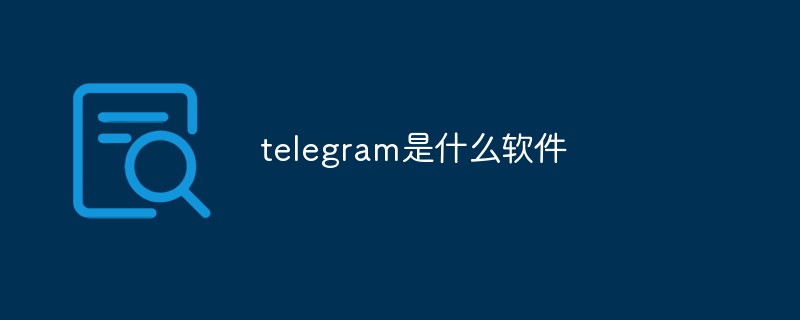 telegram是什么软件Jul 07, 2022 pm 05:05 PM
telegram是什么软件Jul 07, 2022 pm 05:05 PMTelegram是一款跨平台的即时通讯软件,用户可以相互交换加密与自毁消息,发送照片、影片等所有类型文件;Telegram有加密聊天的功能,使用这种功能,聊天双方的内容完全保密,不会担心被监控或被第三方偷窥。官方提供Android、iOS、Windows、macOS、Linux和网页版等多种平台客户端;同时官方开放应用程序接口,有许多第三方的客户端可供选择 。
 armoury crate是什么软件Jul 18, 2022 pm 03:52 PM
armoury crate是什么软件Jul 18, 2022 pm 03:52 PMarmoury crate是一款简易实用,功能全面的华硕系统控制软件;通过Armoury Crate平台,可以启动主页面上的系统性能模式调整、设置相关应用软件、获取系统信息,当机器连接支持的外设时,也可以使用Armoury Crate中所整合的Lighting、AURA Sync功能进行各种灯光特效的设定。
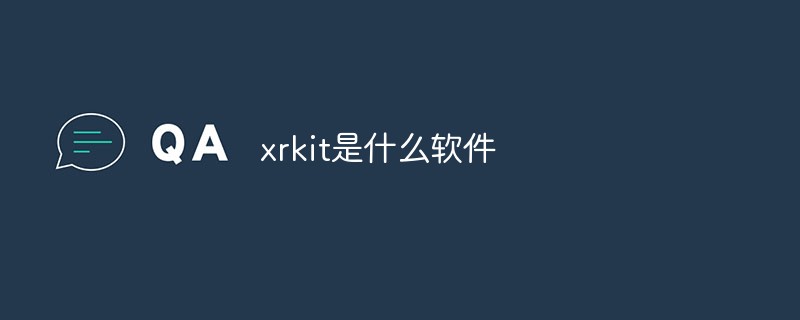 xrkit是什么软件Jul 18, 2022 pm 03:13 PM
xrkit是什么软件Jul 18, 2022 pm 03:13 PMXRKit是为华为手机场景提供场景化、组件化的AR解决方案的框架软件,也就为华为相机,提供了虚拟模型在真实世界中的呈现。XRKit软件支持AR SDK,能与Unity3D引擎兼容,包括PTC Vuforia,ARKit,ARCore等。为AR呈现能力、人脸特效、光影特效;它属于华为XR生态的基础性软件。
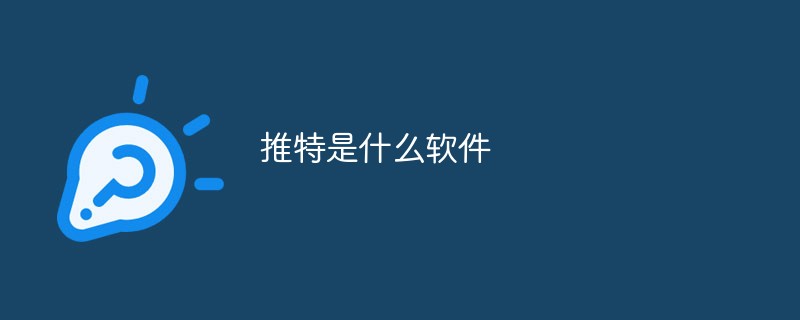 推特是什么软件Jul 13, 2022 am 11:07 AM
推特是什么软件Jul 13, 2022 am 11:07 AM推特(Twitter)是一个社交网络及微博客服务软件,是一家美国的公司;Twitter利用无线网络、有线网络、通信技术进行即时通讯,是微博客的典型应用,允许用户将自己的最新动态和想法以短信息的形式发送给手机和个性化网站群。
 glance by mirametrix是什么软件Jul 28, 2022 am 10:59 AM
glance by mirametrix是什么软件Jul 28, 2022 am 10:59 AMglance by mirametrix是一款眼球追踪软件;glance是由Mirametrix开发的应用程序,软件配合红外摄像头可识别用户脸和眼睛的方向,其中主要包括了状态检测、智能指针和窗口分屏三个功能。
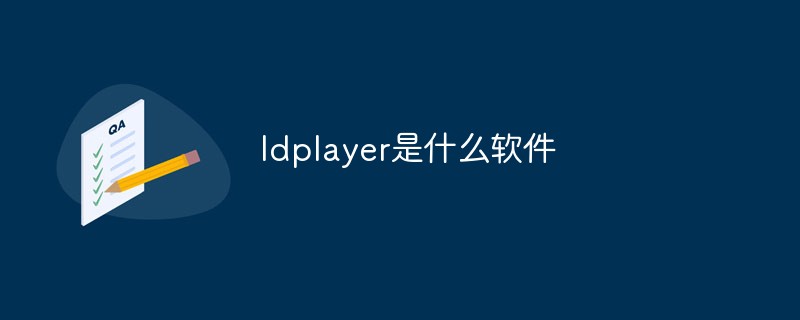 ldplayer是什么软件Aug 02, 2022 pm 02:59 PM
ldplayer是什么软件Aug 02, 2022 pm 02:59 PMldplayer是一款多功能Android操作系统的模拟器,通过它可以直接在PC上运行Android智能手机游戏,是将家用PC或笔记本电脑转变为运行移动软件的游戏机的方法;ldplayer可以用来进行联网,用户可以和其他人一起开启联机对战。
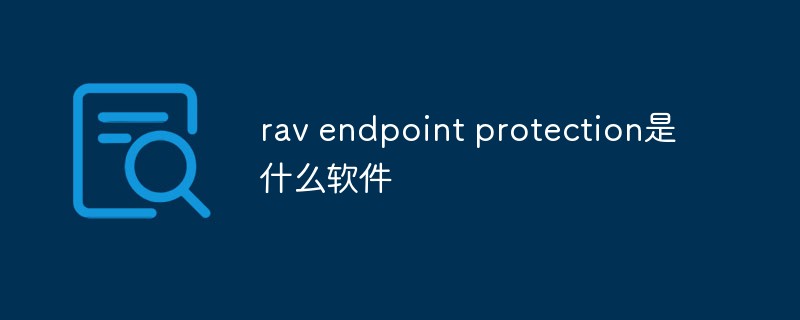 rav endpoint protection是什么软件Aug 11, 2022 pm 04:06 PM
rav endpoint protection是什么软件Aug 11, 2022 pm 04:06 PMrav endpoint protection是瑞星杀毒软件;RAV是“RisingAnti-virus”的缩写,是瑞星反病毒软件的意思,瑞星杀毒软件采用获得欧盟及中国专利的六项核心技术,形成全新软件内核代码,具有八大绝技和多种应用特性。
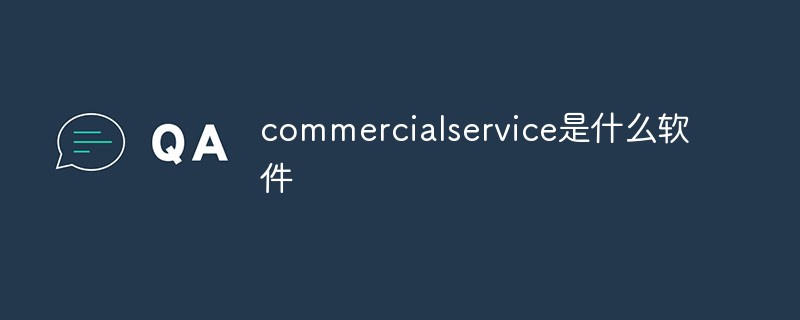 commercial service是什么软件Aug 11, 2022 pm 04:17 PM
commercial service是什么软件Aug 11, 2022 pm 04:17 PMcommercial service指的是商业服务软件;该软件主要为提供产品维修、系统升级、检测换机以及产品咨询等服务,服务的产品包括手机、电视、手表、耳机以及其他配件。

Hot AI Tools

Undresser.AI Undress
AI-powered app for creating realistic nude photos

AI Clothes Remover
Online AI tool for removing clothes from photos.

Undress AI Tool
Undress images for free

Clothoff.io
AI clothes remover

AI Hentai Generator
Generate AI Hentai for free.

Hot Article

Hot Tools

SAP NetWeaver Server Adapter for Eclipse
Integrate Eclipse with SAP NetWeaver application server.

EditPlus Chinese cracked version
Small size, syntax highlighting, does not support code prompt function

Dreamweaver Mac version
Visual web development tools

Notepad++7.3.1
Easy-to-use and free code editor

VSCode Windows 64-bit Download
A free and powerful IDE editor launched by Microsoft






